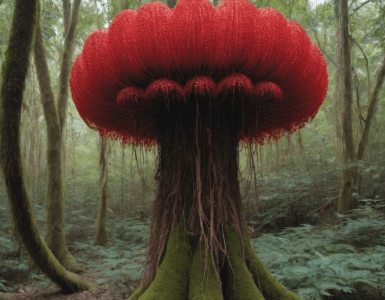We think we know the world. We’ve seen it, touched it, experienced it. But what if I told you there are hidden layers to the seemingly mundane? That the things we take for granted hold surprising secrets, unexpected connections, and frankly, bizarre trivia? The Unexpected Universe: Stuff You *Thought* You Knew (But Probably Don't)
The Unexpectedly Long Life of a Penny
We all know pennies. They’re practically worthless, right? Wrong. A penny, despite its low monetary value, boasts a surprisingly long lifespan. While they’re constantly being made and lost, the sheer volume minted and their surprisingly durable composition mean some pennies are still in circulation from decades ago – some even from the early 20th century! Think about the hands that have held that little copper disc, the purchases it’s witnessed, the stories its tarnished surface could tell. It’s a tiny, overlooked time traveler.
The Surprising Science of Yawning
We yawn. It’s automatic. Contagious. Annoying in meetings. But why? The “lack of oxygen” theory is largely debunked. The more accepted idea points to thermoregulation – yawning cools the brain. And that contagiousness? It’s a social phenomenon, a form of nonverbal communication rooted in empathy and mirroring behavior. So, next time you stifle a yawn, consider it a quirky, involuntary social signal.
Why is the Sky Blue (And What About Other Planets)?
We all learned in school that the sky is blue because of Rayleigh scattering. Sunlight interacts with the atmosphere, scattering blue light more than other colors. Simple, right? But here’s the twist: on other planets, with different atmospheric compositions, the sky can be completely different colors! Mars has a rusty red sky due to dust particles, while Titan (a moon of Saturn) boasts an orange haze. Our perception of “sky” is incredibly Earth-centric, a testament to the unique conditions that make our blue marble so special.
The Hidden History of Bananas
Bananas. A staple fruit. But their journey from wild jungle plants to supermarket shelves is both fascinating and complex. The bananas we eat today are almost entirely clones, genetically identical, making them incredibly vulnerable to disease. The Cavendish banana, the dominant variety, is currently threatened by a fungal plague. This reliance on monoculture is a chilling lesson about the fragility of our food system, a system that feels so secure yet hangs on a thin thread of genetic diversity.
The Unlikely Connection Between Coffee and the Industrial Revolution
Coffee isn’t just a morning pick-me-up; it’s arguably a catalyst for societal change. The rise of coffee houses in 17th and 18th century Europe fostered intellectual and social exchange, acting as informal meeting places for artists, writers, and thinkers. These spaces fueled debates, collaborations, and the spread of groundbreaking ideas – arguably contributing to the intellectual ferment that accompanied the Industrial Revolution. So, next time you sip your latte, acknowledge the historical significance of that caffeinated brew.
The Secret Lives of Clouds
Clouds. Fluffy, white, and seemingly simple. But the variety of cloud types and the processes that create them are incredibly complex. From wispy cirrus clouds to towering cumulonimbus, each type tells a story about atmospheric conditions, temperature gradients, and the ongoing dance between water vapor and air currents. Cloud-spotting, once a child’s pastime, is now a recognized scientific pursuit, offering valuable insights into weather patterns and climate change.
The Astonishing Resilience of Trees
Trees stand tall, seemingly passive. But beneath that bark lies a world of astonishing resilience. They communicate through underground fungal networks, sharing resources and warnings of danger. They adapt to changing climates, shifting their growth patterns and even altering their genetic makeup. And their longevity – some trees live for thousands of years – is a testament to their remarkably efficient and adaptable nature. Their silent strength is a profound lesson in persistence and adaptation.
The Unexpected Beauty of Mathematics
Mathematics, often perceived as dry and abstract, is secretly brimming with aesthetic beauty. The elegance of mathematical formulas, the intricate patterns of fractals, and the surprising connections between seemingly disparate areas of mathematics all point to an underlying harmony and order. From the golden ratio to the Fibonacci sequence, these mathematical concepts appear in nature, art, and even music, offering a glimpse into a deeper, underlying structure of the universe.
Forgotten Histories: The Lost City of Helike
History is littered with lost cities, faded from memory, swallowed by time and disaster. Helike, a once-thriving ancient Greek city, was destroyed by an earthquake and tsunami in 373 BC and mostly forgotten until recent archaeological discoveries. Its rediscovery unveils valuable insights into ancient Greek civilization, revealing a city more advanced and complex than previously imagined. Helike’s story is a humbling reminder of the transient nature of civilizations, of the power of nature, and the enduring value of uncovering the past.
This is just a glimpse into the hidden wonders of the everyday. The world is full of such unexpected facts and surprising connections, waiting to be discovered. So, next time you encounter something familiar, take a closer look. You might just uncover a hidden layer of the fantastic.
























Add comment